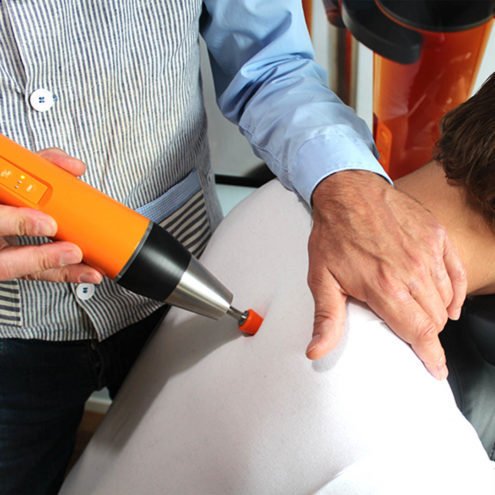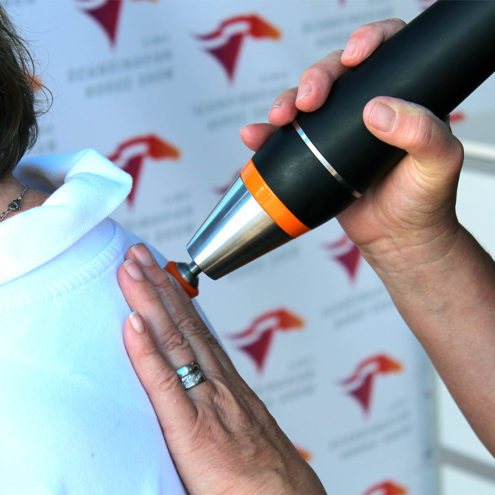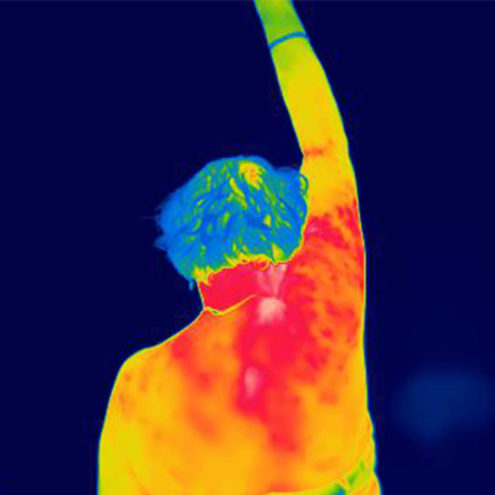Sleeping position for torticollis: Tips for a better night’s sleep with the FasciaClinics

When torticollis interferes with your sleep, you need to consider sleeping position and ergonomics. Torticollis can be painful and affect your daily life, but with a few simple adjustments to the way you lie, you can reduce the pain and wake up more rested. In this article, we will explore how neck pain affects your sleep and what sleeping positions and strategies can help you get a better night’s sleep with the help of the FasciaClinics.
Introduction to neck restraint and sleeping positions
Torticollis is a common problem that many of us suffer from at some point in our lives. It can be the result of muscle tension, incorrect posture or overexertion. Whatever the cause, neck pain can make it difficult to find a comfortable sleeping position and negatively affect sleep quality. Finding the right sleeping position is crucial to reduce pain and optimize your night’s sleep.
Read also: Neck blockage in children
Best sleeping positions for torticollis
Sleep on your back
Sleeping on your back is often the most beneficial sleeping position for those suffering from torticollis. Sleeping on your back helps keep your neck in a neutral position, reducing the risk of muscles tensing and causing pain during the night. To make it even more comfortable, you can follow this advice:
Choose a pillow that provides support for your neck and keeps it in a neutral position.
Use a pillow under your knees to reduce the strain on your back.
Make sure that your mattress provides enough support and that it is not too soft or too hard.
Sleeping on your side with support
For those who prefer to sleep on their side, this sleeping position can also be comfortable in case of torticollis. Here are some tips:
Use a thick pillow that fills in the space between your head and shoulder to support your neck.
Place a pillow between your knees to keep your spine in a more neutral position.
Avoid lying fully extended, bend your knees and hips slightly to reduce tension in your back.
Sleeping on your side can reduce neck strain and facilitate better breathing, but it is important to have the right support to avoid unnecessary tension.
Positions to avoid
There are certain sleeping positions that you should avoid if you have torticollis, as they can increase pain and tension. One of the worst positions is sleeping on your stomach, as it forces your neck to be in a twisted and uncomfortable position. In addition, you should avoid sleeping with your arms above your head, which can create excessive stretching in the neck.
Choice of pillow and mattress
The choice of pillow and mattress can have a significant impact on your sleep quality when you have torticollis.
Choose the right pillow for your sleeping position
When choosing a pillow, you should take into account your preferred sleeping position:
If you sleep on your back, choose a pillow that provides support for your neck and helps keep it in a neutral position.
If you sleep on your side, use a thick pillow to fill the space between your head and shoulder.
If you sleep on your stomach, consider using a flat pillow or simply no pillow at all to reduce neck bending.
The importance of the mattress for neck health
The mattress you sleep on can also affect your neck alignment. A mattress that is too soft can cause your body to sink down too much, which can lead to incorrect positioning of the neck. On the other hand, a mattress that is too hard can create pressure and cause discomfort. It is best to choose a mattress that is medium-firm to provide support while following the contours of your body.
Preventive tips to avoid neck pain during sleep
To prevent torticollis and improve your sleep quality, it is important to create the right sleeping routine and environment.
Sleeping routines and environment
Keep a regular sleep routine by going to bed and waking up at the same time every day.
Create a calm sleeping environment by minimizing noise and light in the bedroom.
Use a comfortable mattress and pillow that supports your neck and back.
Avoid using your phone or tablet in bed, as this can lead to incorrect neck position and sleep disturbances.
Neck stretch before bedtime
A simple and effective preventive measure is to stretch your neck before going to bed. These stretching exercises can help relieve tension in the neck and prepare it for a good night’s sleep. An example of a neck stretch is to gently tilt your head to the side and hold the position for a few seconds before releasing. Repeat this to both sides to stretch out the neck muscles.
Read more about: Exercises for torticollis
FAQ – Frequently asked questions about sleeping position in case of torticollis
How quickly can I expect relief after changing my sleeping position?
Relief from torticollis can vary from person to person and depend on the severity of your condition. Changing your sleeping position may provide immediate relief for some, while it may take some time for others to get used to the new position.
Do I need to buy a special pillow if I have torticollis?
A specialized pillow is not always necessary, but it can be a great help for many. The most important thing is to choose a pillow that provides support and keeps the neck in a neutral position. If you find that a special neck pillow helps you achieve this, it may be worth considering.
What can I do if I wake up in the middle of the night in pain even though I have followed this advice?
If you wake up in the middle of the night with pain, stretching your neck can help relieve tension. You may also consider using a heating pad or cooling bag on your neck to reduce neck inflammation and discomfort. If the pain persists, you should seek professional advice from a specialist such as the FasciaClinics.
Conclusion: The road to a pain-free night with the FasciaClinics
Choosing the right sleeping position for neck pain can make a big difference to your sleep and quality of life. But sometimes neck pain can be a chronic problem that requires professional treatment and advice. The FasciaClinics are experts in treating neck pain and can help you find the best solution for your specific situation. Take the first step towards a pain-free night and contact us today to get the help you need. With the right care and support, you can enjoy a good night’s sleep again.
 Search
Search


































